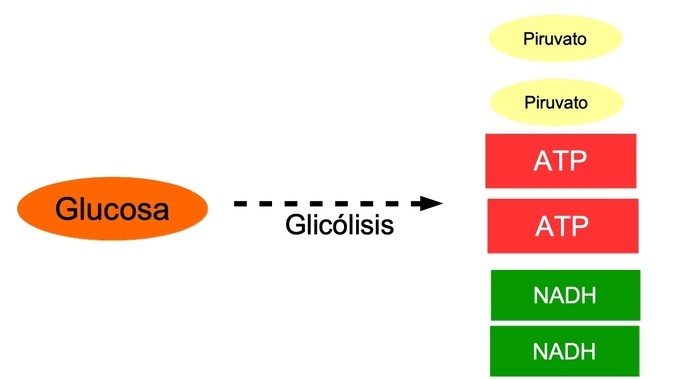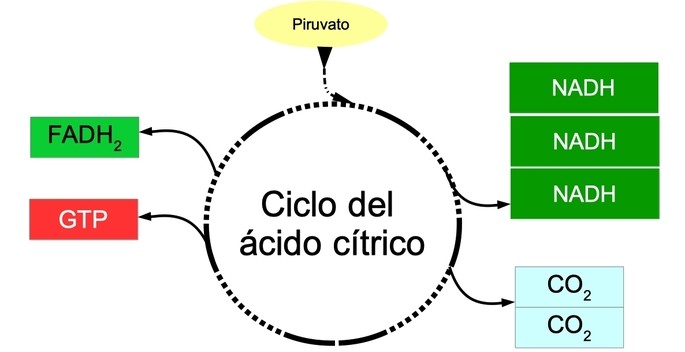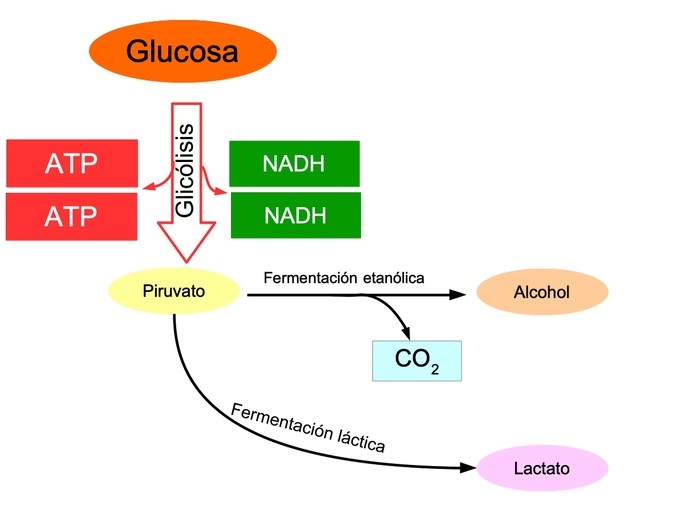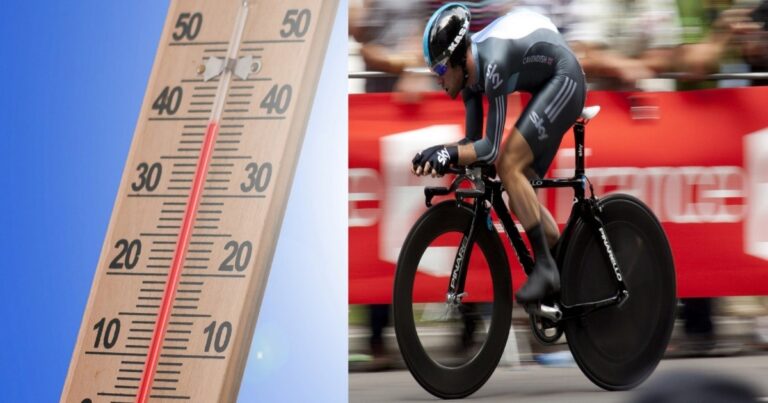Aerobic and anaerobic respiration are types of cellular respiration, that is, ways that some cells have to obtain energy from what they consume. They differ in that aerobic respiration requires oxygen, whereas in anaerobic respiration oxygen is absent.
Also, in aerobic respiration more energy is produced compared to anaerobic respiration; however, it has more chemical steps, so it takes longer to perform.
Aerobic and anaerobic respiration share in their first phase glycolysis or glycolysis, a chain of chemical reactions that transform glucose into smaller molecules.
|
Respiration aerobic |
Breathing anaerobic |
|
|---|---|---|
| Definition | Cellular process of transformation of glucose to obtain energy with participation of oxygen. | Process of obtaining energy used by some cells in the absence of oxygen. |
| Electron acceptor | Oxygen |
|
| Stages or phases |
|
|
| Products |
Water Carbon dioxide 32 ATP/glucose |
Lactic acid Ethyl alcohol Methane 2 ATP/glucose |
| Examples |
Liver cells Kidney cells |
Bread yeast Erythrocytes or red blood cells Bacteria Archaea |
Aerobic respiration
Aerobic cellular respiration is the process that transforms chemical energy from food into ATP in the presence of oxygen. Oxygen receives electrons at the end of a chain of chemical reactions, generating water, carbon dioxide and energy.
First phase of aerobic respiration: glycolysis.
The first step in aerobic respiration is the breakdown of glucose, or glycolysis. This occurs in the cytoplasm of cells. Glycolysis results in two ATP and two electrons in the form of NADH and two pyruvate molecules:

Second phase of aerobic respiration: citric acid cycle.
The second step of aerobic respiration is the citric acid cycle or Krebs cycle. This is a series of eight chemical reactions that take place in the mitochondria of eukaryotic cells.
A pyruvate from glycolysis enters the cycle and results in three NADH, three carbon dioxides, one GTP and one FADH.2:

Third phase of aerobic respiration: oxidative phosphorylation.
The third and final step in aerobic respiration is the process of oxidative phosphorylation. This process takes place in the electron transport chain, a set of proteins in the mitochondrial membrane that transfer NADH electrons from the Krebs cycle.
The end result of aerobic respiration is 32 ATP per glucose molecule:

Anaerobic respiration
Anaerobic cellular respiration is the way prokaryotic cells and some eukaryotic cells obtain energy from glucose, without the need for oxygen. It takes place in the cytoplasm of the cell.
Anaerobic respiration serves for energy production in cells that do not possess mitochondria, such as bacteria, archaea and red blood cells. In rapid muscle contraction, muscle cells can resort to anaerobic respiration, producing lactic acid.
First phase of anaerobic respiration: glycolysis.
Anaerobic respiration begins with glycolysis, the process of glucose degradation, as in aerobic respiration. In this step, two energy molecules or ATP are produced.
Second phase of anaerobic respiration: fermentation.
The next step may be fermentation, of which there are two types:
- Lactic fermentationwhere pyruvate is transformed into lactate, as in yogurt bacteria.
- Ethanolic fermentationIn this case, pyruvate gives rise to ethanol and carbon dioxide, a process carried out by the yeasts in wine and beer.

Some animals can switch to anaerobic respiration, such as carp or goldfish. When the surface of lakes freezes in the winter, oxygen in the water decreases. These fish, which normally have aerobic respiration, can survive because of their ability to maintain anaerobic respiration.
You may be interested to see also:




